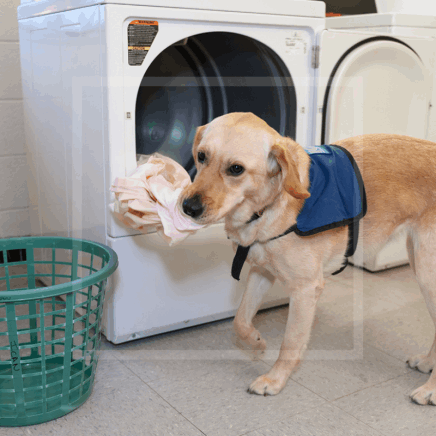
Mobility and Assistance
Mobility assistance dog tasks are infinite. Each service dog performs actions it’s trained for. If you have a daily routine, your dog will learn what you need and may even look to you for their next task before you even give it. Typical daily tasks play a huge role in both the handler’s, and the dog’s lives, and these tasks can become routine. In most cases, environmental cues will inform the dog what is needed, but with mobility assistance, many of the tasks must be cued by the handler.